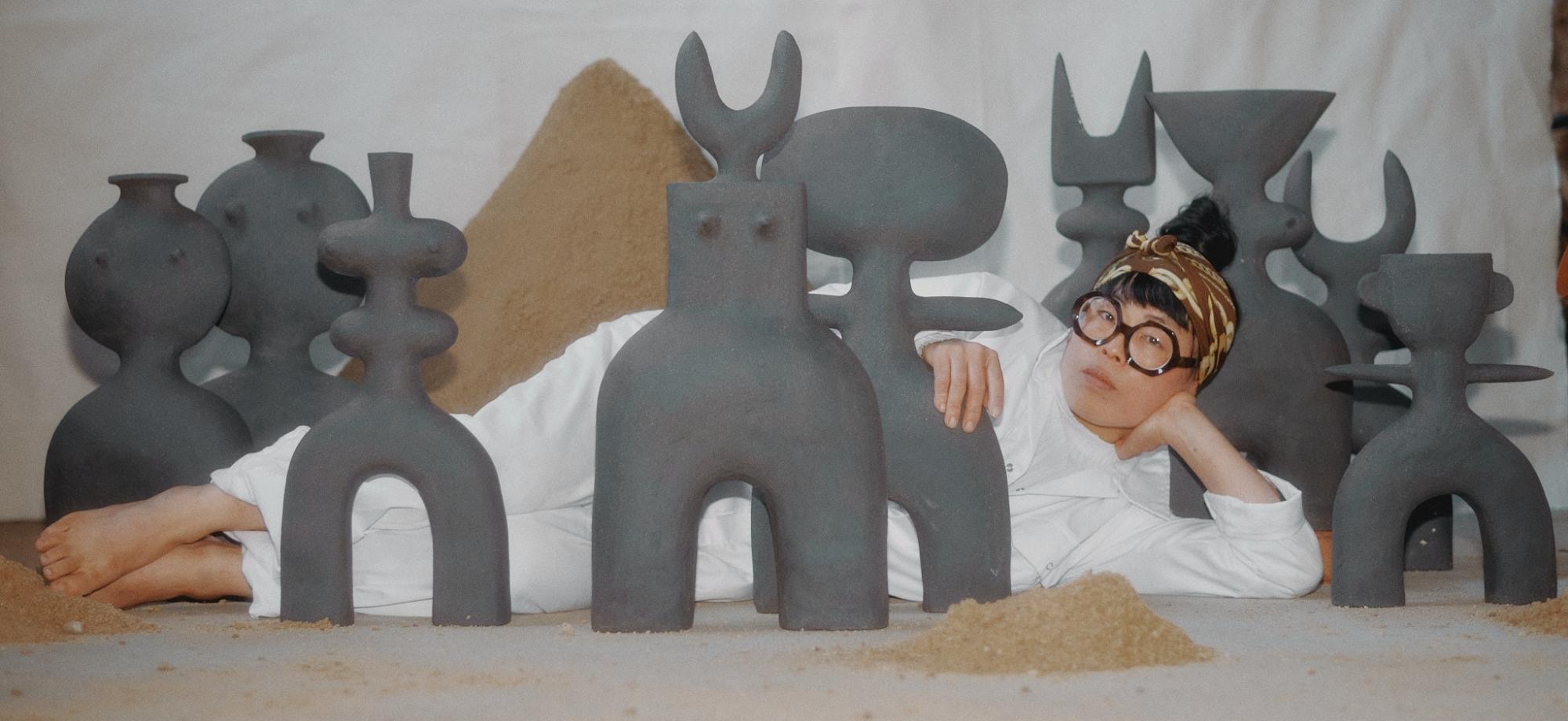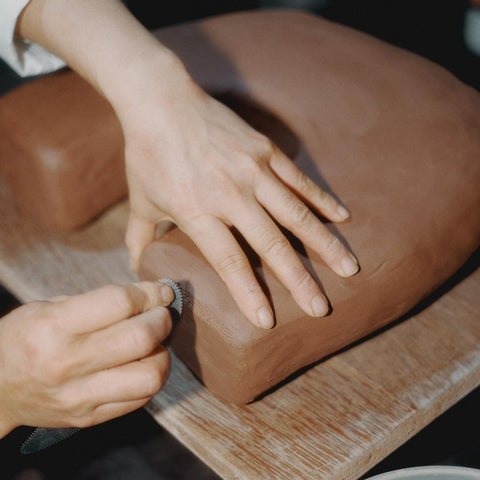
Artist
Noe Kuremoto
Noe Kuremoto is a ceramic artist who makes everything by hand using simple tools. She was born in Osaka, Japan, and graduated in Fine Art with First Class Honours from Central Saint Martins College of Art. She works and lives in London with her family, including sausage dog Lassie.
She’s known for playful sculptural work that takes the form of functional wares. Her pieces mix child-like simplicity with contemporary sophistication, and incorporate her background in Fine Art and design with her cultural heritage.
Read 'In The Studio With Noe Kuremoto'




Noe's Style
Noe takes inspiration from traditional Japanese ceramics and themes but puts a deeply personal and modern spin on each piece. Her work is bold in both style and subject matter, whilst also retaining a subtlety and mysticism which makes it so powerful and unique.
Each series is an ode to a feeling or a way of life. For example, her Haniwa Warrior Series references traditional ritualistic Japanese funerary sculptures, yet speaks of what it means to be “a warrior” today, specifically a female one. Each piece, powerful and mighty in their stature, is an ode to the woman who has bravely pursued a career doing what she is passionate about, despite social and financial pressures. This stems from her own experience, taking the leap to become a full-time artist, whilst also supporting a growing family. Poems accompany her pieces.
She writes: “For years I was afraid to become a full time artist. Afraid to voice my honest view of the world. Afraid to sacrifice the security and comfort of my day job. Afraid to admit it was killing my soul. Afraid of confrontation. So I stayed agreeable - to avoid it, at all costs. I did it long enough that I could no longer hear my own voice - the voice that said what I really want to do is make art…”
"I hope every piece I make helps my sons to see the world as a beautiful place. I want my ceramics to be like a beautiful dream that my hands, fire and clay turn into reality." - Noe Kuremoto
